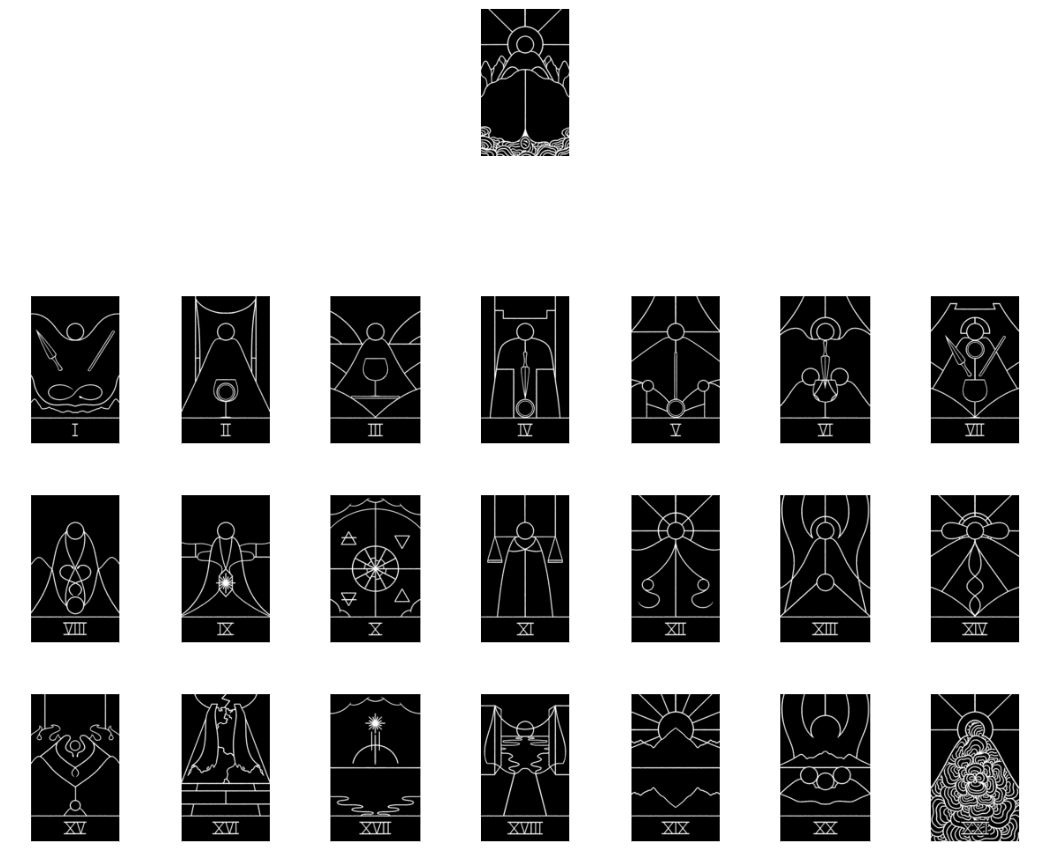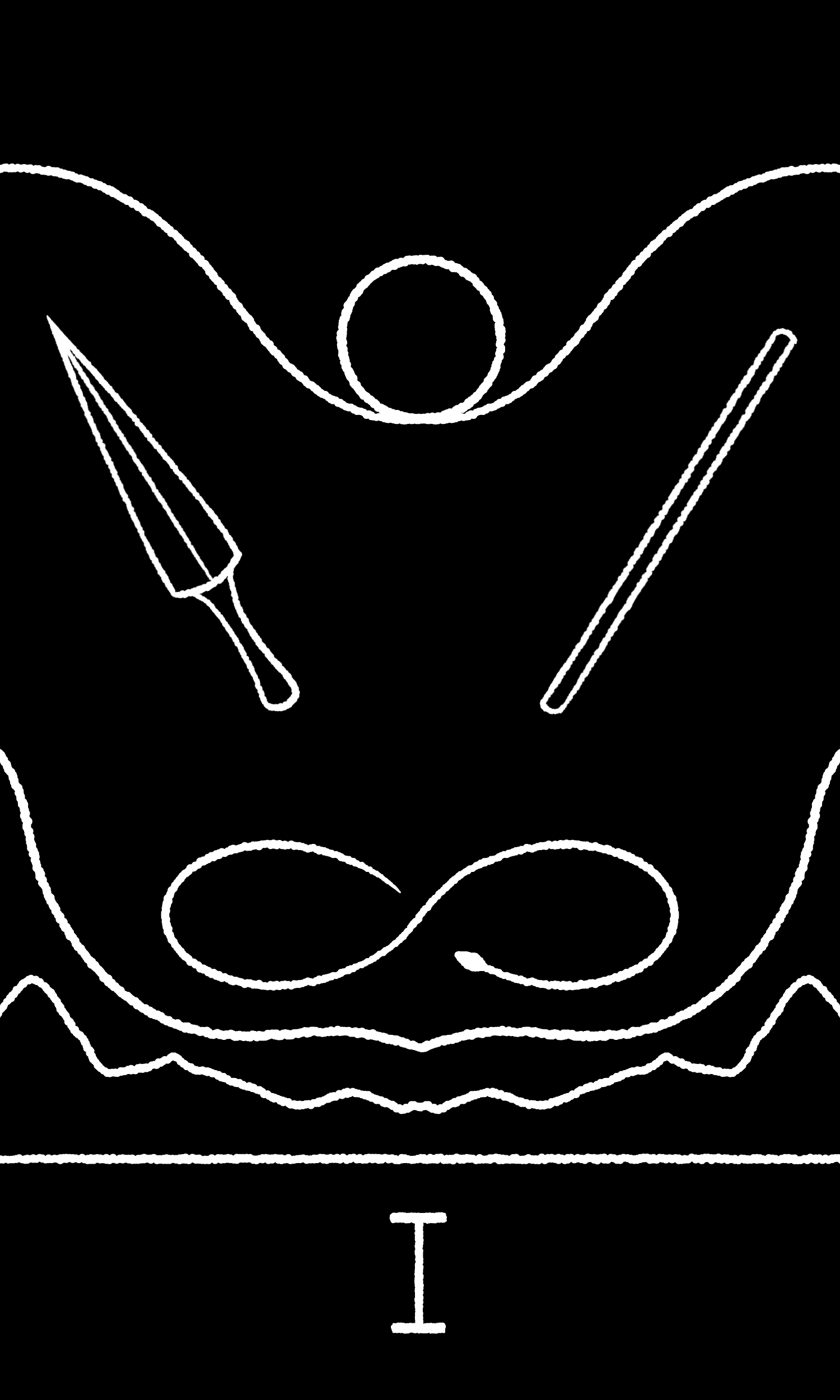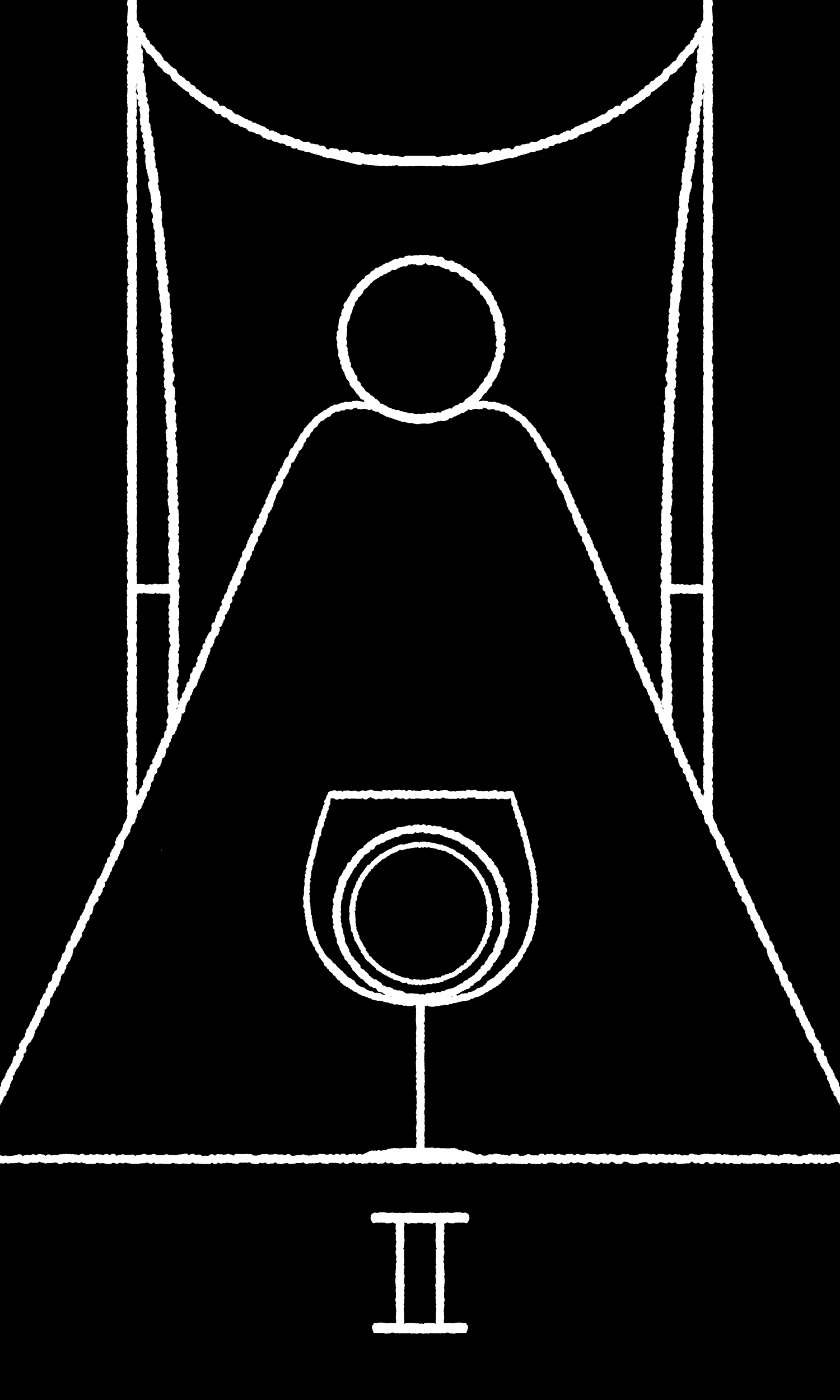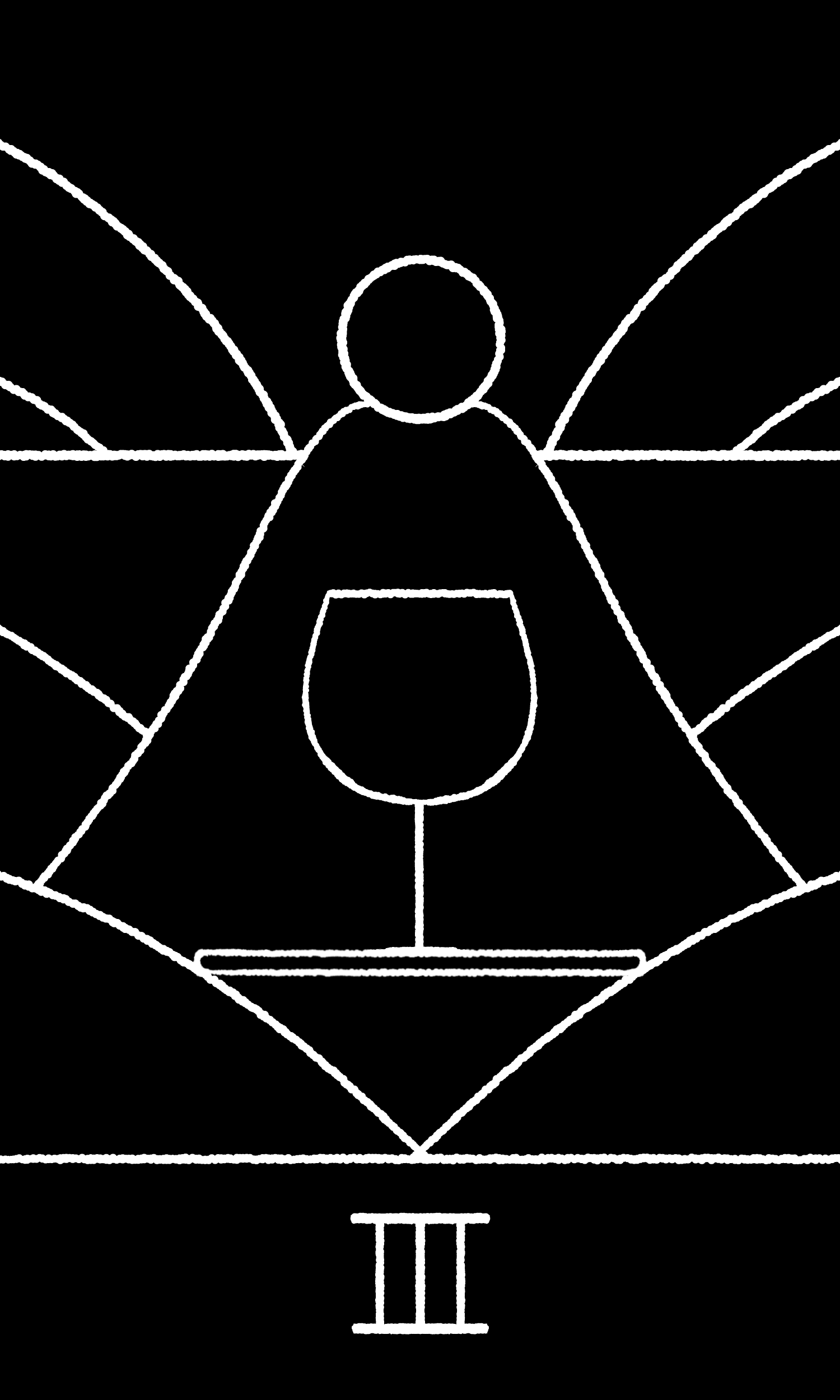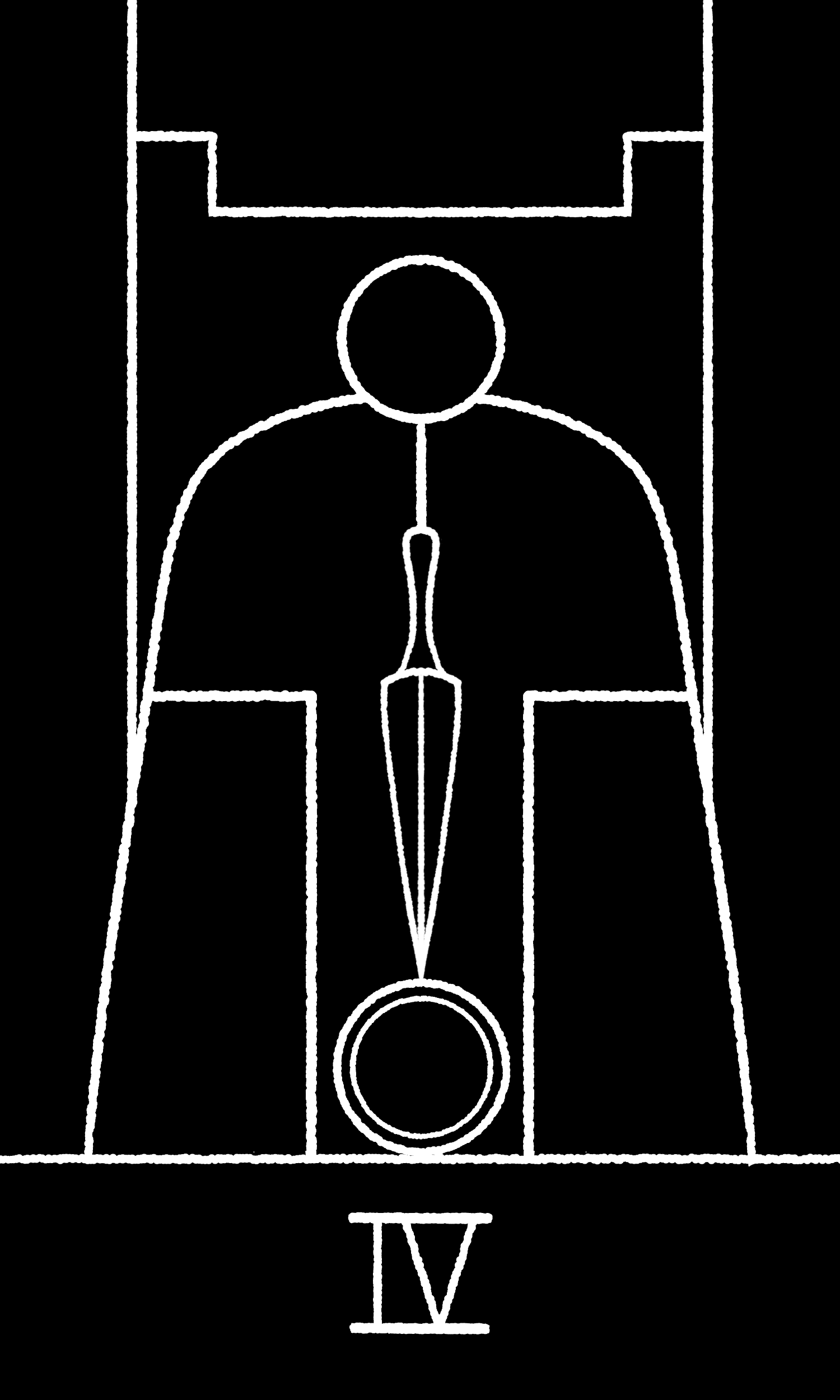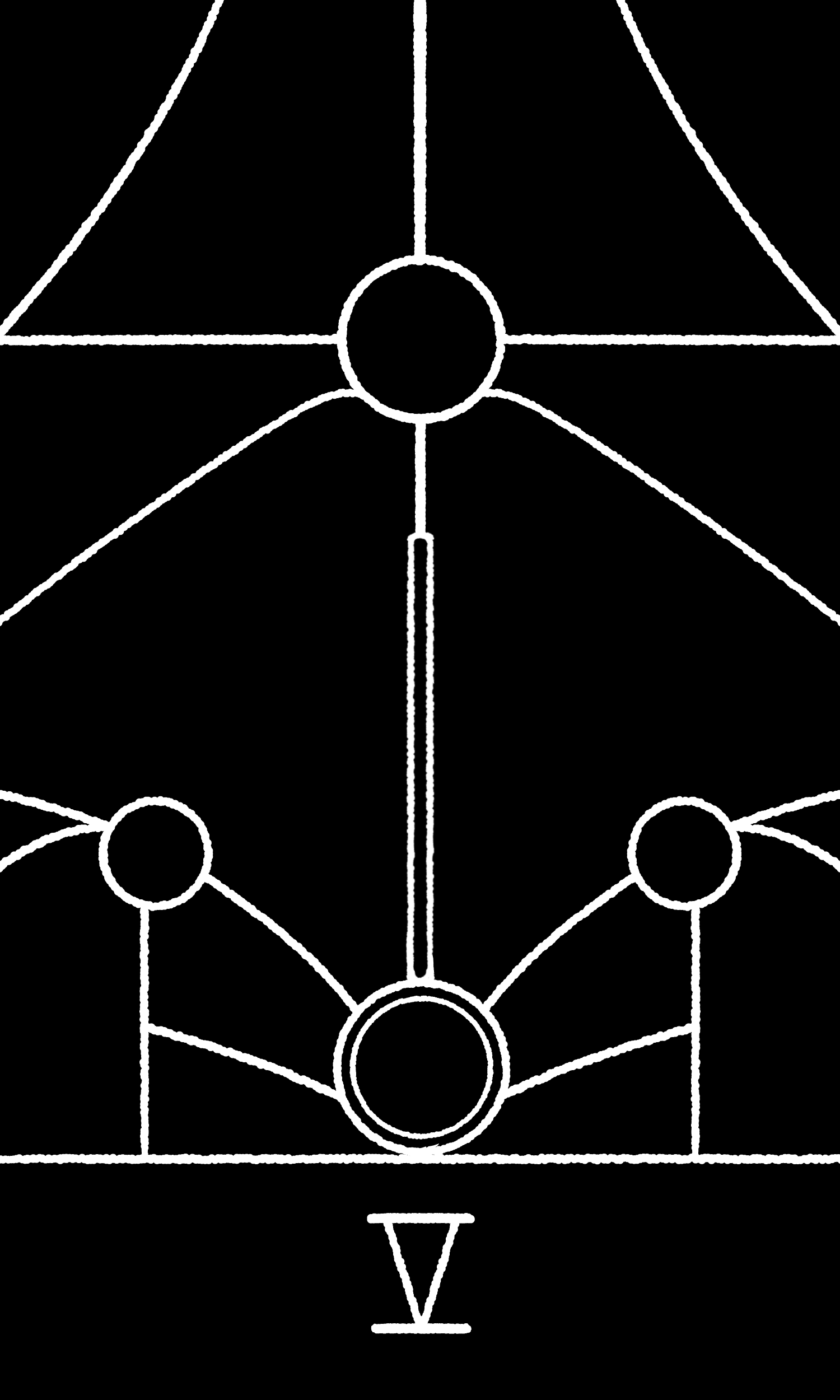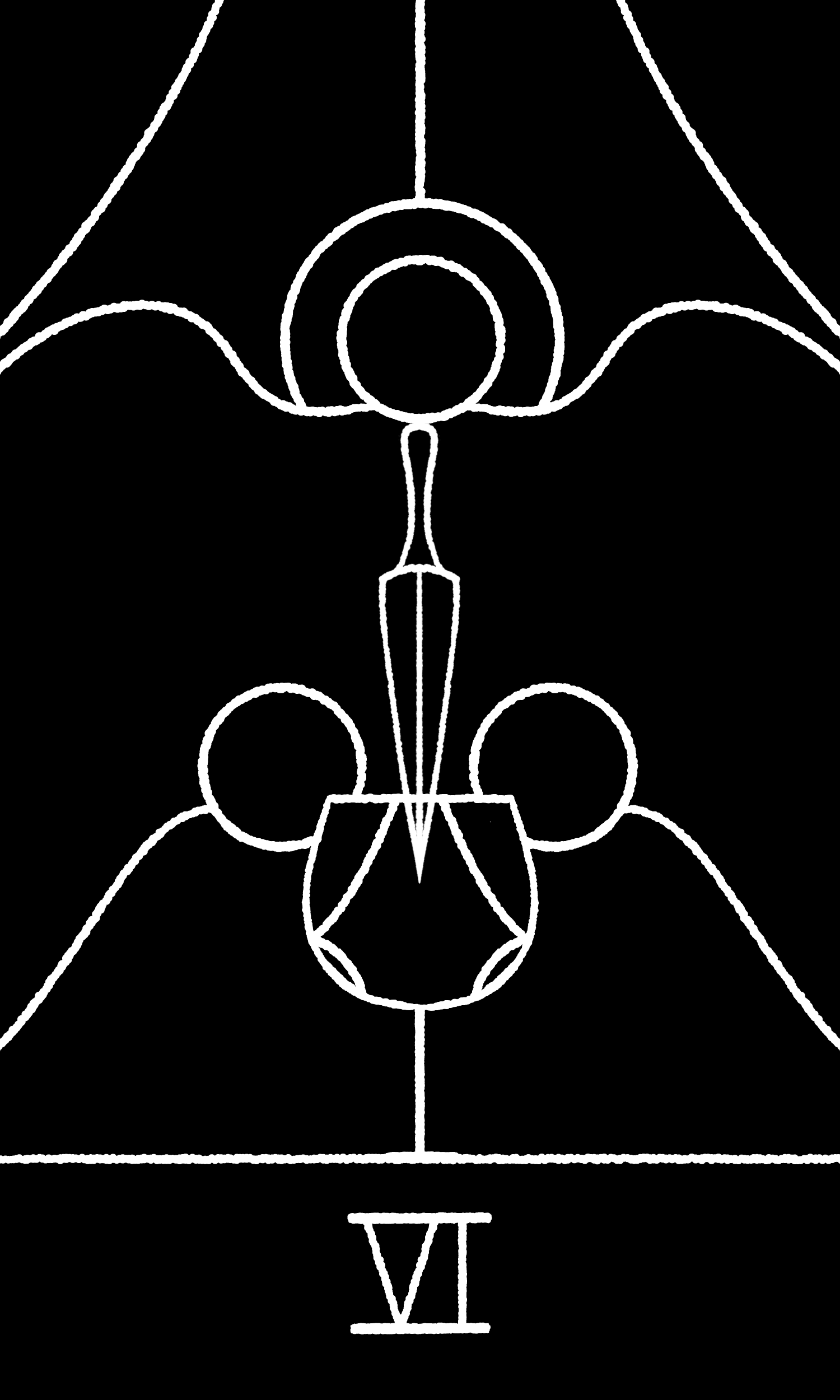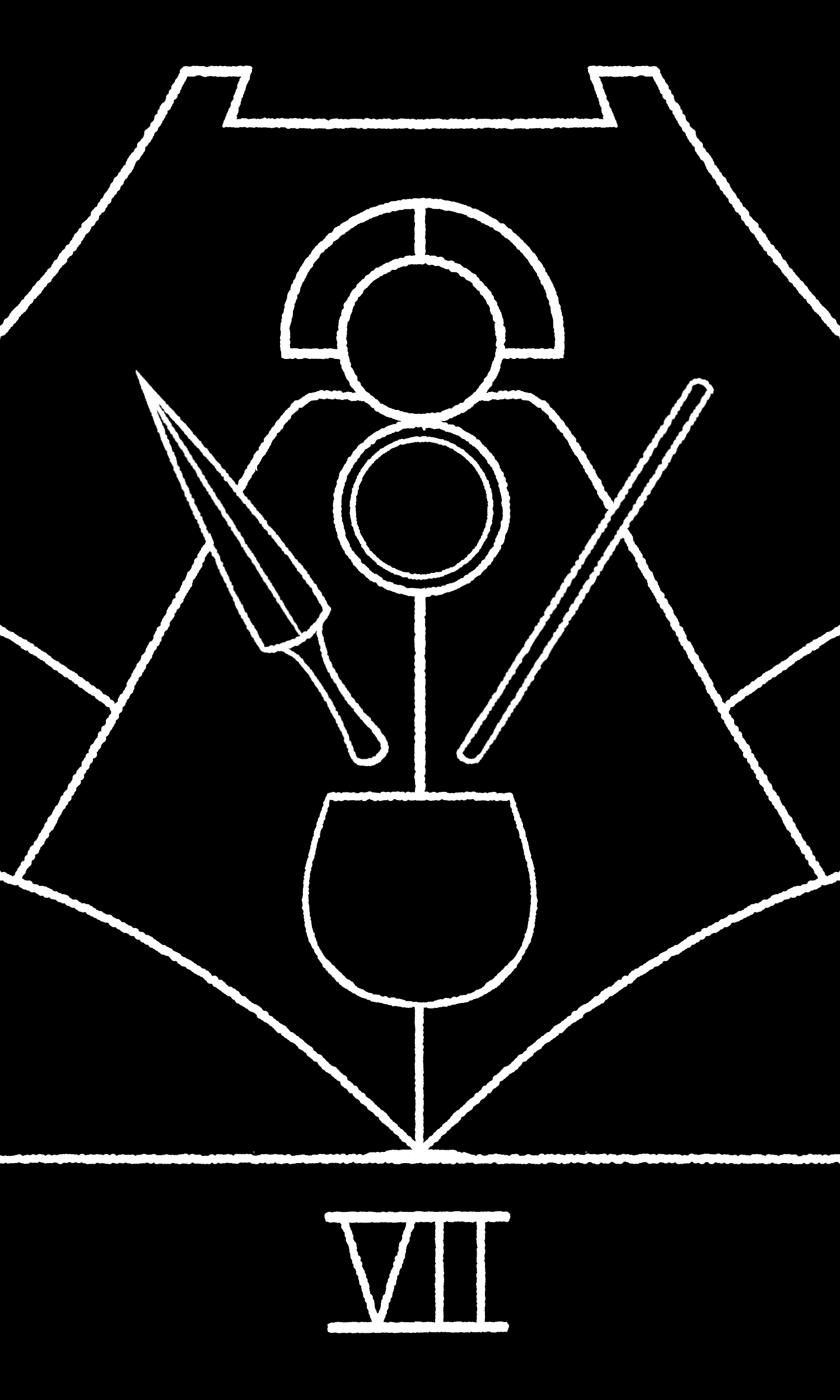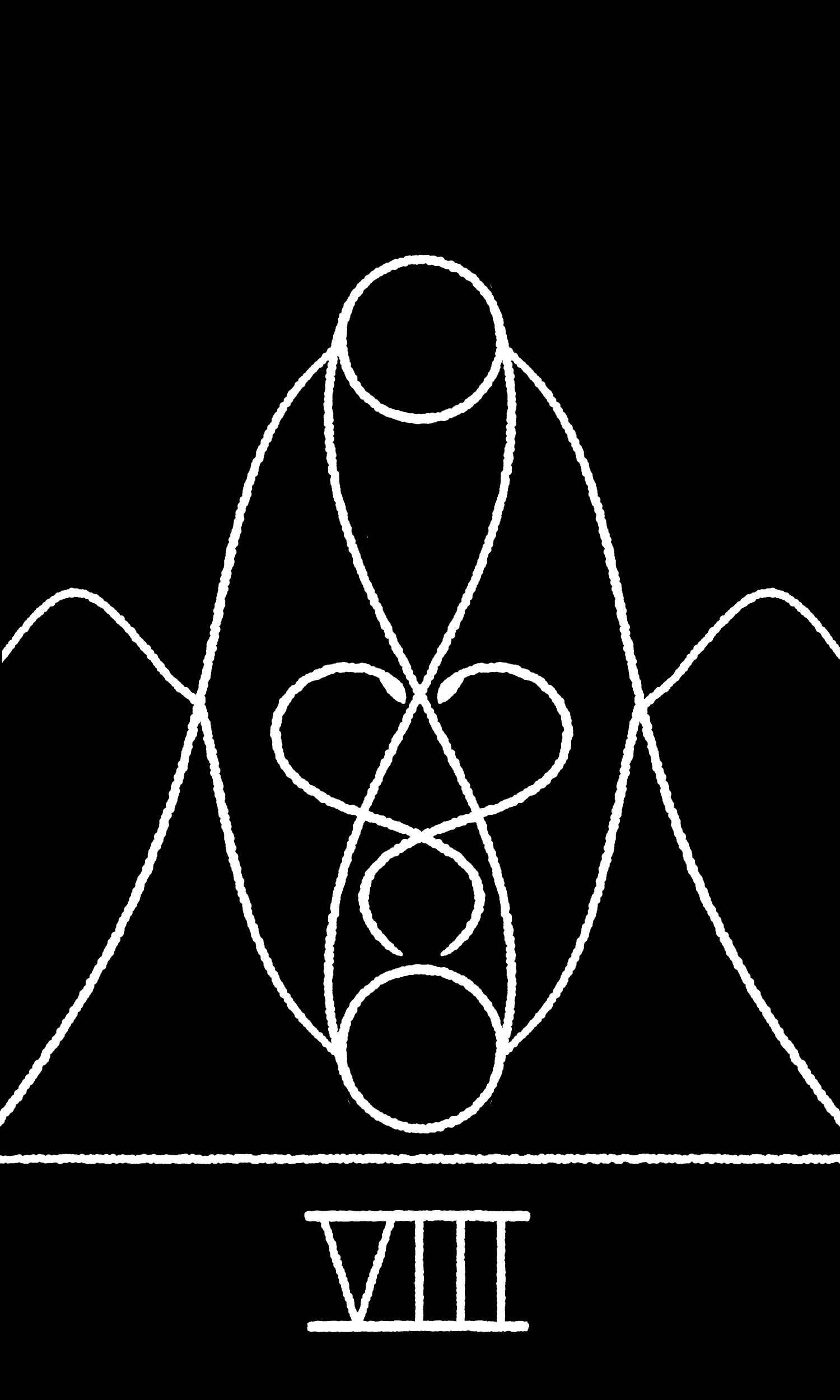NARRATIVES IN THE MAJORS
In the tarot, the major arcana follow a linear narrative from The Fool to The World. Though this is an important theme in the tarot, it is far from the only way to view the majors. I designed the Crux with other connections in mind as well, so the deck would highlight other important groups and the wisdom they hold.
When the majors are lined up evenly in three rows of seven (with only The Stray / The Fool left out), patterns emerge in the cards. Though there are many ways to organize the cards, this is my favorite perspective on the majors. In this alignment, we can see patterns emerge within the structure of the majors, not just the grand journey of The Stray.
HORIZONTAL NARRATIVES
The three rows of cards are understood to embody three levels of The Fool’s journey. The first line is full of material and conscious energy grounded in reality. The second line veers into the subconscious, bringing in themes that exist beyond what is understood and controlled consciously. Finally in the third line there is a sense of collective energy, spiritual enlightenment or transcendence. Together they create The Fool’s journey, however individually they have their own importance.
Though all three lines carry important lessons, the one most changed from a traditional deck is the first line, so I will cover this important group here. If you want to learn more about this way of looking at the cards, I recommend Seventy Eight Degrees of Wisdom by Rachel Pollack.
For example, the first line in The Crux walks us through the development of a well-rounded self. We learn to manifest in The Conjurer, to observe as the Diviner, etc. Every card teaches a lesson about our role as a person in the world.
All of these cards contain two of the four suits, when we typically only see the suits on the first major arcana card, The Magician. I chose to distribute the suits among these cards to illustrate the way they are grounded in reality. Although these archetypes are larger than life, they are tied close with our physical and conscious selves.
The Conjurer presents the sword and the wand, both active suits. The Diviner presents the cup and the coin, both passive suits. These first two cards divide the suits up by their active and passive natures.
The Creator presents the cup and the wand, both fluid suits. The Preserver presents the sword and the coin, both rigid suits. These cards divide the suits by their fluid and rigid natures.
The Designer presents the coin and the wand, while The Union presents the cup and the sword. These suits are complete opposites in their natures, and create their own unique and challenging energy.
Finally, The Command features all four suits united. As the end of the physical narrative in the majors, The Command is the keeper of all the suits, blending all they have learned from the previous cards into confident control.
These suit combinations reinforce the associations we have with these cards, as well as tie them in with the minors and court. When you see these suits (or elements) meet, you will be called to think of the major card that features them.
VERTICAL NARRATIVES
In the arrangement shown above, cards will align in seven groups of three, connecting through the rows.
Try laying the cards out in this fashion. Allow the edges to touch, and see how lines connect or disconnect.

